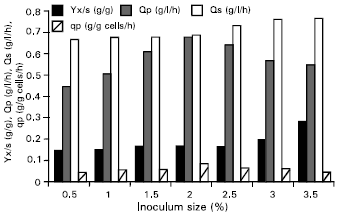Research Article
Effect of Vegetative Inoculum on Submerged Citric Acid Fermentation by Aspergillus niger
Biotechnology Research Laboratories, Department of Botany, Government College University, Lahore, Pakistan
Asad-ur- Rehman
Biotechnology Research Laboratories, Department of Botany, Government College University, Lahore, Pakistan
Amna Ehsan
Biotechnology Research Laboratories, Department of Botany, Government College University, Lahore, Pakistan
Ikram-ul- Haq
Biotechnology Research Laboratories, Department of Botany, Government College University, Lahore, Pakistan
Javed Iqbal
Department of Botany, Quaid-i-Azam Campus, University of the Punjab, Lahore. Pakistan









